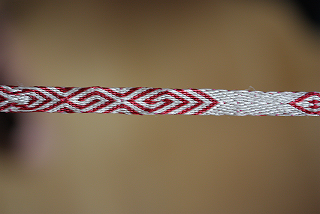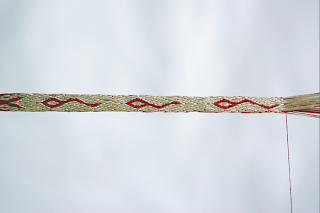With the new year now firmly in the saddle, dates for the summer season are slowly lining up on my calendar. And it already becomes clear that 2010 is The Year of Unfortunate Date Collisions, with lots of things falling together - like almost all official holidays with Saturdays or Sundays, and a few of my private fixed date events with work events (and should you wonder: work will win).
There are already a few work dates I am very, very much looking forward to. I am planning to go to Cave Gladium again in 2010 - that will be August 9 to August 14. Since I later heard from some folks that they would have loved to attend a workshop, but didn't hear about it in time, this year I am planning to have the 'shops during the week (to leave the weekend for shopping and all the other weekend stuff) and get it much more public much earlier.
There will be more workshopping and a talk/lecture in Austria, too - I am going to the Spectaculum in Friesach, end of July/start of August. You can read more about the programme here on the official pages. The workshop will teach participants the basics of medieval sewing - differences between fabrics, materials, stitches and seams. Because seam types, stitches and fabric type were purposefully matched for the desired results, this is something like "medieval sewing 101", giving the groundworks for sewing and tailoring medieval style. I love this workshop topic because the lowly hand-seam is underestimated so much today - and lining all the possible stitches, seams and hems up in two sampler cloths - one wool, one linen - shows so much of the possibilities.
And speaking of dates: The book is being layouted at the publishing house, and I am waiting for new work (second proofing) any day. Once the packet is here, I promise I will do my very best to be totally quick in reading, proofing and sending back/responding. Very much fitting the situation and the question that usually pops up at some point - "why does that all take so freakingly long?", INTERN (who does write herself all-caps) has put up a nice blog post summing it up here.
There are already a few work dates I am very, very much looking forward to. I am planning to go to Cave Gladium again in 2010 - that will be August 9 to August 14. Since I later heard from some folks that they would have loved to attend a workshop, but didn't hear about it in time, this year I am planning to have the 'shops during the week (to leave the weekend for shopping and all the other weekend stuff) and get it much more public much earlier.
There will be more workshopping and a talk/lecture in Austria, too - I am going to the Spectaculum in Friesach, end of July/start of August. You can read more about the programme here on the official pages. The workshop will teach participants the basics of medieval sewing - differences between fabrics, materials, stitches and seams. Because seam types, stitches and fabric type were purposefully matched for the desired results, this is something like "medieval sewing 101", giving the groundworks for sewing and tailoring medieval style. I love this workshop topic because the lowly hand-seam is underestimated so much today - and lining all the possible stitches, seams and hems up in two sampler cloths - one wool, one linen - shows so much of the possibilities.
And speaking of dates: The book is being layouted at the publishing house, and I am waiting for new work (second proofing) any day. Once the packet is here, I promise I will do my very best to be totally quick in reading, proofing and sending back/responding. Very much fitting the situation and the question that usually pops up at some point - "why does that all take so freakingly long?", INTERN (who does write herself all-caps) has put up a nice blog post summing it up here.





